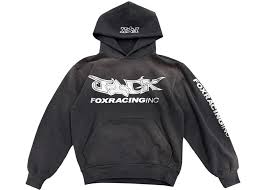How to Pick Fabric for a Long-Lasting Custom Print Tee
Good fabric makes a t-shirt more than a quick-wear item. It decides how your print looks, how the shirt feels, and how long you’ll want to wear it. When you know what to check before you order, you save time and avoid disappointment.
In this blog, we will show you how to choose the right fabric for your next custom print tee, what to weigh before making a decision, and why paying attention to small details creates a better shirt.
Why Fabric Choice Shapes the Life of Your Tee
Fabric is the base layer for everything you do with a shirt. A smooth, tightly woven cloth gives sharper lines, while a rougher weave may mute colors. Fibers also affect breathability and softness, which matters if you plan to wear the tee often.
When the wrong material is used, prints can peel or fade, and the shirt may stretch out or shrink in the wash. When you pick a fabric with care, you get a tee that holds its shape and keeps the print fresh longer.
Common Fabric Types for Printed Shirts
The most common fabrics are cotton, polyester blends, and tri-blends. Each one behaves differently under heat and ink.
- Cotton feels soft and airy. Ring-spun or combed cotton produces a smooth finish that works well with screen or digital printing.
- Polyester blends give strength and reduce shrinking. They dry faster and can handle repeated washes better than plain cotton.
- Tri-blends mix cotton, polyester, and rayon. They’re light, stretchy, and often feel premium while keeping their shape.
Selecting the right fabric for your custom print tee sets the tone for comfort and durability from the start.
How Fabric Weight Affects Print and Wear
Weight is usually measured in GSM or ounces per square yard. This tells you how thick the cloth feels. A higher-weight fabric feels dense and may hold a print longer because it has more fiber to grip the ink.
Lighter fabrics are better for warmer weather or active wear, but need careful printing so the ink doesn’t bleed. Knowing the weight helps you match the shirt to its purpose: everyday wear, team uniforms, or giveaways.
Which Fabric Holds Prints Best?
A question that pops up often is which material keeps the print looking sharp over time. The weave of the fabric matters as much as the fiber. A tighter weave means fewer gaps and a more solid surface for the ink to rest on.
Cotton gives bright, rich colors but can shrink unless pre-treated. Polyester blends resist shrinking and wrinkling, but sometimes look less bold. Smooth tri-blends allow detailed prints but need special handling to keep the design crisp.
Stretch, Shrink, and Care Tips for Longevity
Shrinkage and stretch affect how the print sits after several washes. Pre-shrunk cotton or blends reduce surprises. Stretchy fabrics can distort designs if they’re pulled too much, so pick blends that have a steady feel. How you wash and dry the shirt also changes its life span.
Cold water, mild detergent, and air-drying help maintain the print and fabric quality. Small habits like turning the shirt inside out before washing keep friction off the printed side.
Balancing Comfort with Durability
Many people think soft fabric always wears out faster, but blends can prove that wrong. Poly and rayon mixed with cotton can create a fabric that’s both soft and tough. When you choose based on touch and performance, you get a shirt that feels good but still lasts.
If you want all-day comfort for staff uniforms, events, or resale, blends may be the right fit. For a rich print that pops, cotton still wins, but you’ll trade some durability for that soft, natural feel.
A Quick Comparison Table
| Fabric Type | Print Quality | Durability | Comfort Level | Care Needs |
| 100% Cotton | High detail | Medium | Soft | Moderate |
| Poly Blend | Good detail | High | Medium | Easy |
| Tri-Blend | Moderate | High | Very Soft | Easy |
This table sums up how common fabrics compare so you can weigh them side by side before placing an order.
Planning Ahead Before Ordering
Think about how you’ll use the shirt. Is it for a one-time event, daily wear, or resale? This choice affects what fabric weight, blend, and print style you should pick. You don’t need to be a textile expert, just know your goals and communicate them. Even small details, like the color of the base fabric, can change how your print appears on the finished tee.
Conclusion
Fabric is the base of every great t-shirt. By understanding weight, weave, and fiber, you can order a shirt that looks good, feels right, and stays wearable after many washes. When you plan your next custom print tee, start by thinking about the fabric.
This step can make the difference between a short-term shirt and a long-term favorite. As printing methods keep improving, you’ll see more blends and materials designed to hold color better and feel softer, giving you even more choice for future orders.


